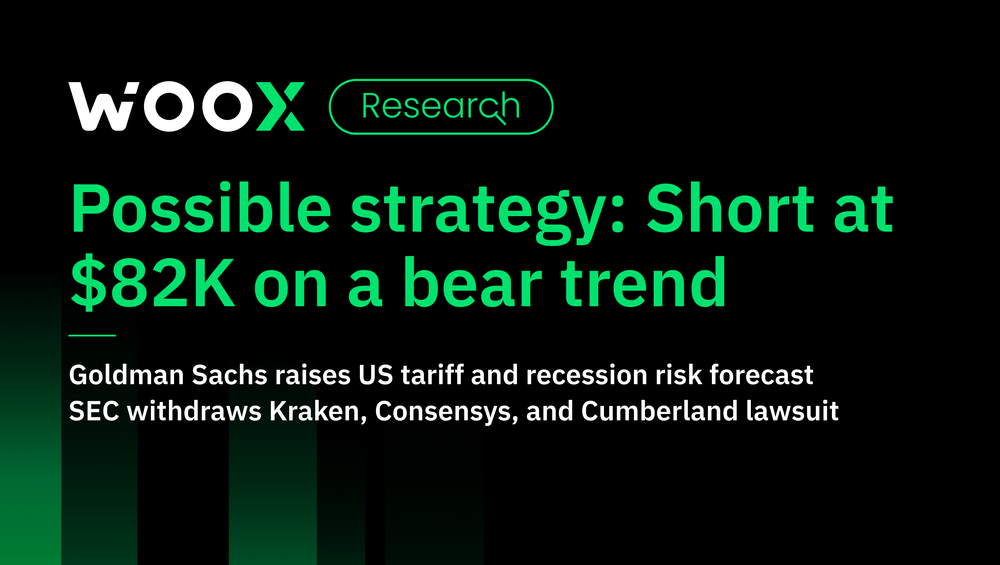Possible strategy: Short at $82K on a bear trend
Mainstream data observations
- BTC core liquidation levels:
Long positions: Liquidation price at $81,036 with a liquidation amount of $244M
Short positions: Liquidation price at $83,960 with a liquidation amount of $990M
The current BTC price is $81,778. The liquidation price for long positions is $81,036 with a liquidation amount of $244 million. If Bitcoin’s price drops to $81,036, it will trigger a massive liquidation of long positions, potentially putting significant downward pressure on Bitcoin’s price.
- ETH Core Liquidation Levels:
Long positions: Liquidation price at $1,798.9 with a liquidation amount of $27.41M
Short positions: Liquidation price at $1,824.9 with a liquidation amount of $54M
The current Ethereum price is $1,803.72. While long positions are in the danger zone, the liquidation amounts are relatively small, which is unlikely to cause significant price fluctuations in ETH.
- Total stablecoin market cap: $238.4B
The total market cap has seen a slight decline (-0.1%). Over the past seven days, Tether Gold and PAX Gold have seen price increases of 3.7% and 2.7% respectively, which may lead to a short-term pullback. It could be an opportunity to consider buying on the dip.
- BTC market cap share: 61.27% Total market cap (Total 3): $767.37B (24h change -0.94%)
This indicates that the market currently holds a relatively high level of recognition and trust in BTC, while other altcoins are less favored, with most of them showing average performance.
- Current miner breakeven price: $53,892.26
However, nearly half of the miners have shutdown prices above the current BTC price. For instance, the shutdown price for the Antminer S19XP is $77,621. If BTC’s price continues to decline, there is a risk that some high-cost mining machines may cease operations, potentially causing short-term price volatility in BTC.
- Bitcoin MVRV-Z score: 1.71
This is the ratio of the Minimum Market Value (current market cap) to the Realized Value (the total value of all BTC at the time they were last moved). The current level is at a relative four-month low, potentially indicating a bottom. However, there is still room for further decline. If the market fundamentals do not deteriorate, it might be wise to consider accumulating gradually on dips to capture potential future upward moves.
- Bitcoin BVIV score: 57.29
Between February 3, 2024, and March 11, 2024, the BVIV score increased by 96.52%, during which BTC’s price rose from $43,193 to $72,702—an increase of 68.32%, indicating a strong upward trend. Currently, there is no clear volatile trend, which may suggest that the current BTC price has not yet hit the bottom.
Market overview
BTC has failed to break through the 91,000-92,000 range since March 28, indicating that this recent upward movement is a rebound, not a reversal. After the PCE data came out lower than expected, US stocks plunged, and BTC also dropped below 85,000, continuing its pullback. A bearish signal appeared on the 4-hour chart, and BTC would need to rise above 84,000 for a potential shift to a bullish trend. The probable most cost-effective strategy currently would be to short at 82,000 with a stop-loss of around 83,000, betting on the continuation of the bearish trend. It’s crucial to monitor the pre-market US stock trends today and whether the opening can release the current fear. This will be key for BTC’s movements over the next few days.
Macro overview
On March 31, Goldman Sachs raised its forecast for US tariffs and recession risks in a recent report. The report predicts that US tariffs will increase by 15 percentage points by 2025, mainly due to the new reciprocal tariffs announced by Donald Trump. This is expected to harm inflation, GDP growth, and employment. Core PCE inflation is expected to rise to 3.5% by the end of 2025, while GDP growth may slow to 1.0% in the fourth quarter. The unemployment rate is projected to reach 4.5%, and with weak consumer and business confidence, the probability of a US recession within 12 months has risen to 35%.
Based on views from other investment banks and institutions (JPMorgan, Bank of America, UBS, Pimco), there is a consensus that Trump’s tariff policy will increase inflationary pressure and weaken economic growth, with recession risks significantly rising by 2025 (general predictions range from 25% to 40%). The divergence lies in expectations for the Federal Reserve’s response: JPMorgan and UBS believe the Fed still has room to cut interest rates, while Bank of America and Pimco are concerned that inflation could limit the extent of monetary easing.
In the short term, BTC is impacted by the potential for a US recession and the possible sell-off of risk assets. The root cause of this is Trump’s tariff policy, which is leading to an economic slowdown in the US and driving down US stocks. BTC and the Nasdaq are more correlated during periods of economic uncertainty. As investors sell off risk assets, BTC faces selling pressure.
The rise in inflation has led to a stronger US dollar. BTC is generally considered an alternative asset to the dollar, and a stronger dollar will cause some purchasing power to flow out of BTC.
In conclusion, the focus could be more on the potential US economic recession, particularly given the current type of inflation, which is cost-push inflation. The key question is whether the Federal Reserve will mitigate some of the risks by cutting interest rates (rate cuts primarily affect the demand side, while tariff-driven cost-push inflation is a supply-side issue). Although rate cuts could boost consumption in the short term, they cannot offset the structural impact of tariffs. This will determine the long-term trajectory of BTC, and currently, the outlook appears relatively bleak.
Key events
- L1 blockchain Initia has established a foundation X account and launched its official website.
- This week, tokens including SUI, W, and ZETA will see significant unlock, worth $343.1 million.
- BNB ecosystem platform Four.Meme will update its liquidity pool and switch to the PancakeSwap V2 solution and all newly created and launched token LPs will be destroyed directly after going live.
- According to Cointelegraph, EVM-compatible L1 blockchain platform Sonic Labs has canceled its plan to launch an algorithmic stablecoin pegged to the US dollar and instead opted to develop an alternative stablecoin product priced in UAE Dirhams.
- Base Chain AI Agents creation protocol Virtuals Protocol has adjusted the transaction fee distribution model for Agent tokens, where 70% of the transaction fees will be directly allocated to the agent creator, and 30% will be distributed to ACP.
- Mobile application Usual expanded its services by deploying to Base, and USD0 and USUAL are now live.
- US SEC has withdrawn its lawsuits against Kraken, Consensys, and Cumberland DRW.
- According to Cointelegraph, GameStop stock has been restricted from trading on the New York Stock Exchange due to a 234% surge in short trading volume within 24 hours.
Hot projects
Exchange updates
- WOO X has launched the WAL/USDT perpetual contract with up to 20x leverage.
- Coinbase has added Keyboard Cat (KEYCAT) to its listing roadmap and obtained a license from the New York State Department of Financial Services to engage in virtual currency business activities.
- Hyperliquid has tweeted that its blockchain has been upgraded to include a fully on-chain validator voting feature for asset delisting.
- Bitget Seed has launched STINKDEX (STINKDEX), and the second phase of the Early Hunter Airdrop is featuring the project Tutorial (TUT), while Bitget PoolX and CandyBomb have listed KILO (KILO).
- Bybit has launched the BANANAS31/USDT perpetual contract with up to 25x leverage.
- Binance Wallet has launched the 'Trade on DEX with CEX Funds' feature, enabling Binance users to trade millions of tokens on the Binance wallet trading chain using funds from the Binance trading platform (CEX), while also airdropping an additional 10 million PARTI tokens.
Industry landscape
- According to the announcement of the US SEC, the cryptocurrency working group has met with representatives of Wintermute to discuss solutions for "crypto regulation issues."
- US stock exchange Nasdaq has submitted a filing to the US SEC to launch a Grayscale spot Avalanche exchange-traded fund (ETF).
- According to Cointelegraph, EU insurance regulators have proposed a 100% capital support requirement for insurance companies holding crypto assets, citing the inherent risks and high volatility of crypto assets.
- According to CryptoSlate, Panama has released a proposed cryptocurrency bill to regulate cryptocurrencies and promote blockchain-based services development.
Emerging projects
Other opportunities
On-chain DeFi mining yield products:
Risk: More suitable for users who are bullish on Berachain in the long term. Additionally, users should exercise caution when investing and conducting their research.
Disclaimer
The development and market cap of stablecoins mentioned in the above content are speculative and based on market analysis at the time of writing and should not be interpreted as guaranteed outcomes. Market conditions can fluctuate widely and unpredictably due to numerous factors such as regulatory changes, market demand, and global economic developments.
The information provided in this article is for general informational purposes only and does not constitute financial, investment, legal, or professional advice of any kind. While we have made every effort to ensure that the information contained herein is accurate and up-to-date, we make no guarantees as to its completeness or accuracy. The content is based on information available during writing and may be subject to change.
Please note that this article includes references to third-party websites and data provided solely for convenience and informational purposes. We do not endorse or assume any responsibility for the content, accuracy, or reliability of any information, products, or services offered by third parties.
Cryptocurrencies involve significant risk and are NOT suitable for the majority of investors. The value of digital currencies can be extremely volatile, and you should carefully consider your investment objectives, level of experience, and risk appetite before participating in any staking or investment activities.
We strongly recommend that you seek independent advice from a qualified professional before making any investment or financial decisions related to cryptocurrencies. We shall in NO case be liable for any loss or damage arising directly or indirectly from the use of or reliance on the information contained in this article.


